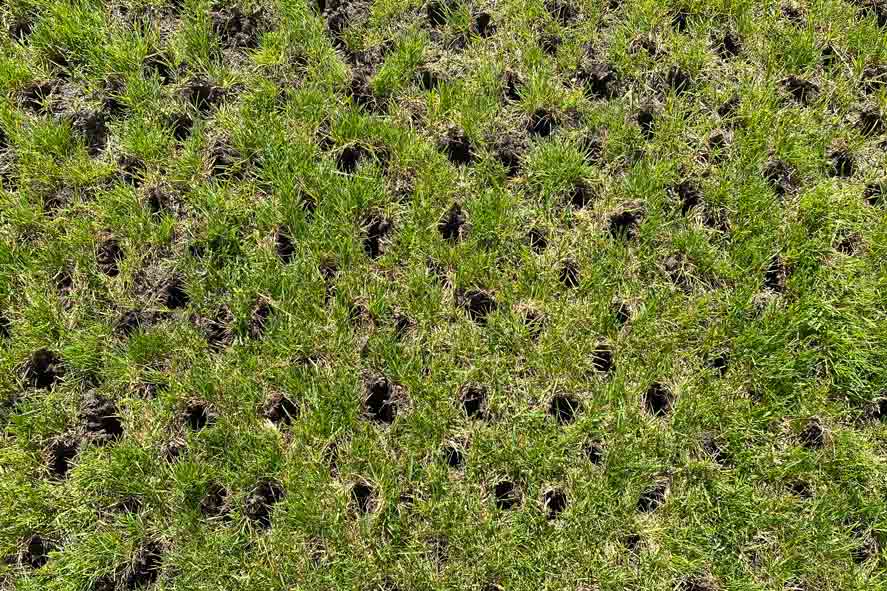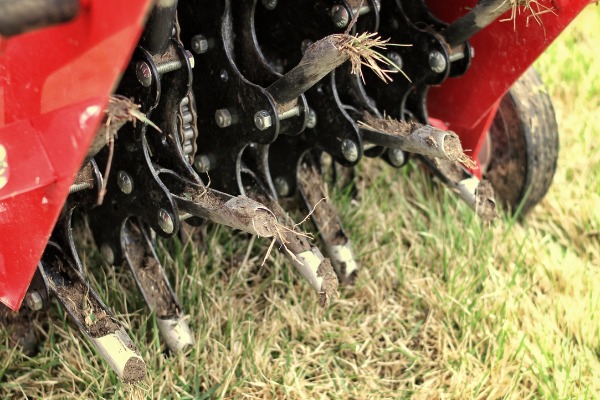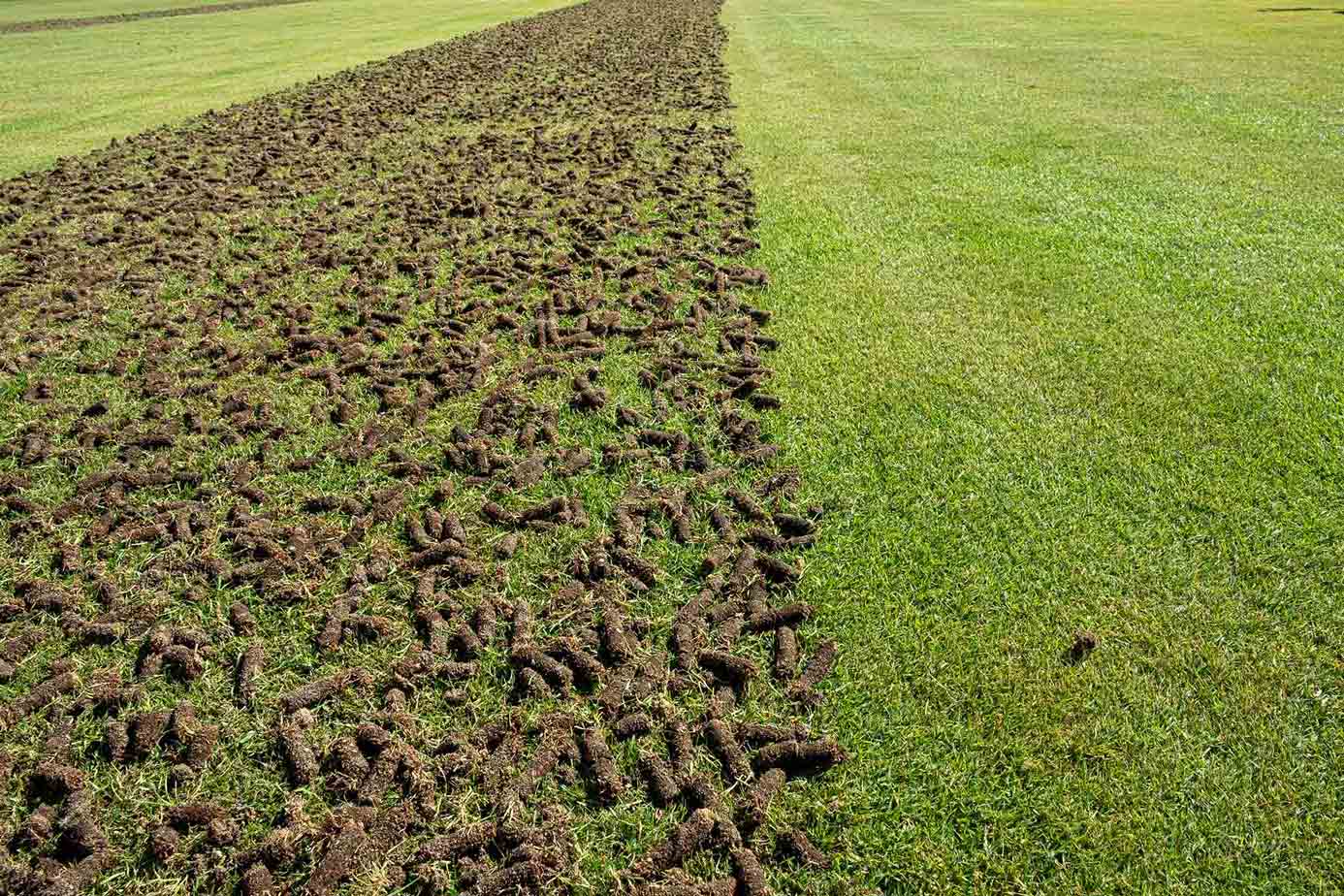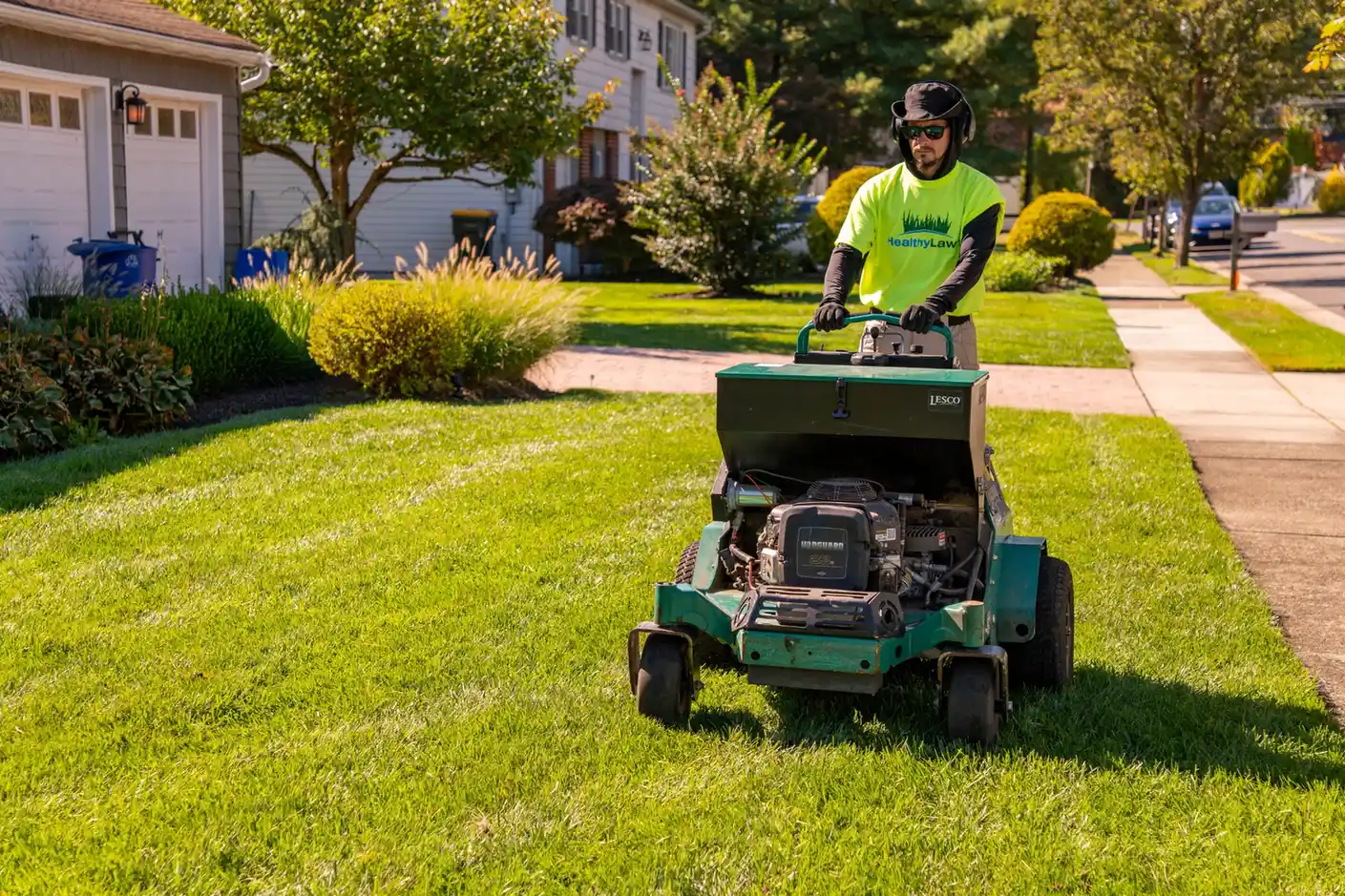Core aeration is a lawn care method that involves removing small plugs of soil throughout your yard to improve soil conditions. When soil becomes compacted, nutrients, water, and oxygen can not be absorbed by your lawn. The aeration process opens up your lawn so it can breathe and absorb resources freely, leading to healthier soil and stronger, better-looking grass.
Below are the top reasons you should aerate your New Jersey lawn!

Soil compaction is one of the main reasons lawns in New Jersey become thin, patchy, and weak. Dense clay soils that are common throughout much of the state compress easily, making it harder for roots to expand and access the resources they need. Core aeration physically removes small soil plugs, creating space and relieving the pressure that suffocates your lawn’s root system.
Why soil compaction hurts your lawn:
Healthy Lawn Aeration Tip: If your lawn feels hard underfoot or water puddles during rain, it’s a clear sign your soil is compacted and would benefit from aeration.

The roots of the grass in your lawn require oxygen to grow, and compacted soil limits the flow of air beneath the surface. Without enough oxygen, roots weaken, biological activity declines, and your lawn becomes vulnerable to stress and drought. The process of core aeration creates many small channels in the soil, allowing fresh air to reach deeper layers where roots are active.
Improved airflow leads to:
Healthy Lawn Aeration Tip: Consistent mowing is the best way to ensure that your lawn does not become covered in thatch and overgrown grass.

When your lawn becomes too hard, rainwater and water from irrigation can not flow throughout your landscape and become absorbed into the soil. Instead, it often runs off, erodes the surface, or creates puddles that suffocate the grass. Aeration alleviates these issues by opening channels that allow water to move efficiently into the ground where it can hydrate the roots.
Benefits of improved water infiltration include:
Healthy Lawn Aeration Tip: Aeration is especially beneficial for yards with slopes, drainage challenges, or heavy foot traffic areas that tend to harden quickly.

Fertilizer can only do its job if it reaches the roots of your lawn, but compacted lawns trap nutrients on the surface or within the thatch layer. Aeration helps by creating open pathways where fertilizer granules and organic amendments can travel directly into the soil.
Why fertilizer works better after aeration:
Healthy Lawn Aeration Tip: Many lawn care professionals pair aeration with fertilization because the improvement in nutrient uptake is so significant.

Thatch layers naturally form on cool-season lawns, especially Kentucky bluegrass and tall fescue, two common turf types in New Jersey. When thatch becomes too thick, it blocks water, nutrients, and air from reaching the soil, creating a host of lawn health issues. Aeration helps manage thatch by increasing microbial activity and improving air and moisture flow through the layer.
Signs your lawn has excessive thatch:
Healthy Lawn Aeration Tip: A thatch layer thicker than ½ inch should be addressed quickly, and annual aeration is one of the most effective natural solutions.

Overseeding cool-season lawns is extremely common in New Jersey because it refreshes turf density, fills thin areas, and helps your lawn recover from summer stress. Combining overseeding with aeration dramatically improves germination success because the holes left behind allow seeds to settle into the soil where they stay protected and moist.
Benefits of pairing aeration with overseeding:
Healthy Lawn Aeration Tip: Always overseed immediately after aeration, never before, because seeds must fall into the aeration holes to take full advantage of the process.

New Jersey summers have become hotter and more erratic over the years. Turf that lacks deep roots dries out faster, browns quickly, and struggles to recover after heatwaves. Aeration encourages deeper root growth by loosening the soil and giving roots more room to expand.
Stronger, deeper roots help your lawn:
Healthy Lawn Aeration Tip: Lawns aerated consistently each year show significantly better summer performance compared to non-aerated lawns.

The cumulative effect of better airflow, nutrient absorption, water infiltration, and root growth is a noticeable improvement in how your lawn looks and feels. Aerated lawns develop thicker turf, stronger color, and a more uniform surface that naturally resists weeds.
What homeowners typically notice after aeration:
Healthy Lawn Aeration Tip: For New Jersey cool-season lawns, early fall is the gold standard timing for aeration, giving the turf maximum recovery and growth before winter.

If you are looking to improve soil conditions in your lawn, aeration is a great place to start. Our professional core aeration service for New Jersey ensures that your lawn will be ready to maximize benefits of fertilization, seeding, and irrigation, leading to a healthier lawn throughout the year. Call us today for more information!